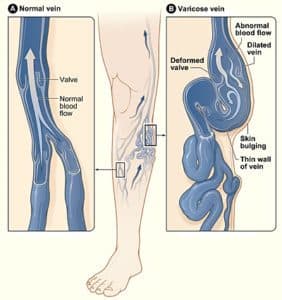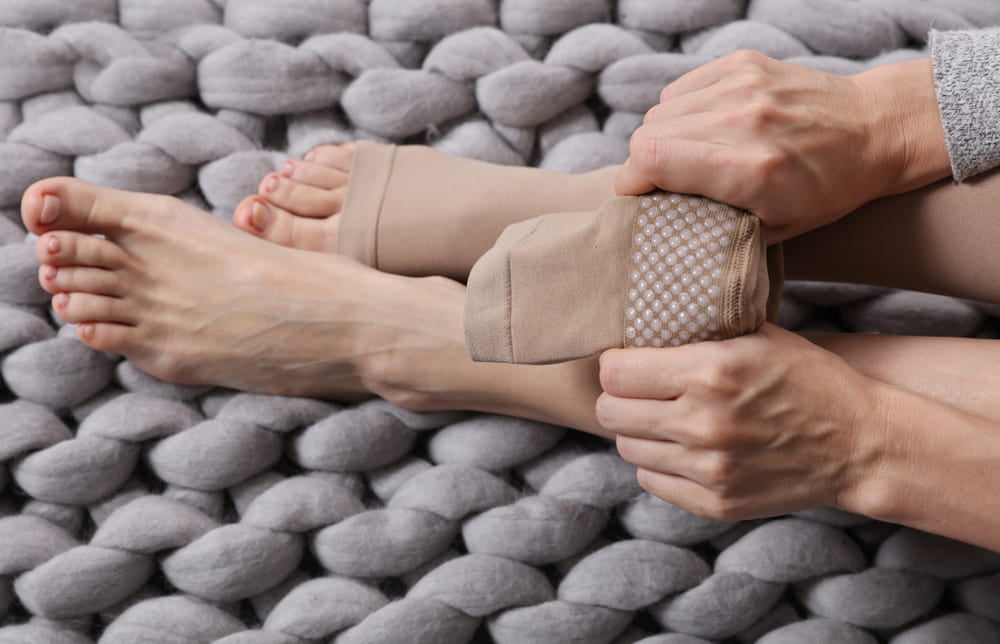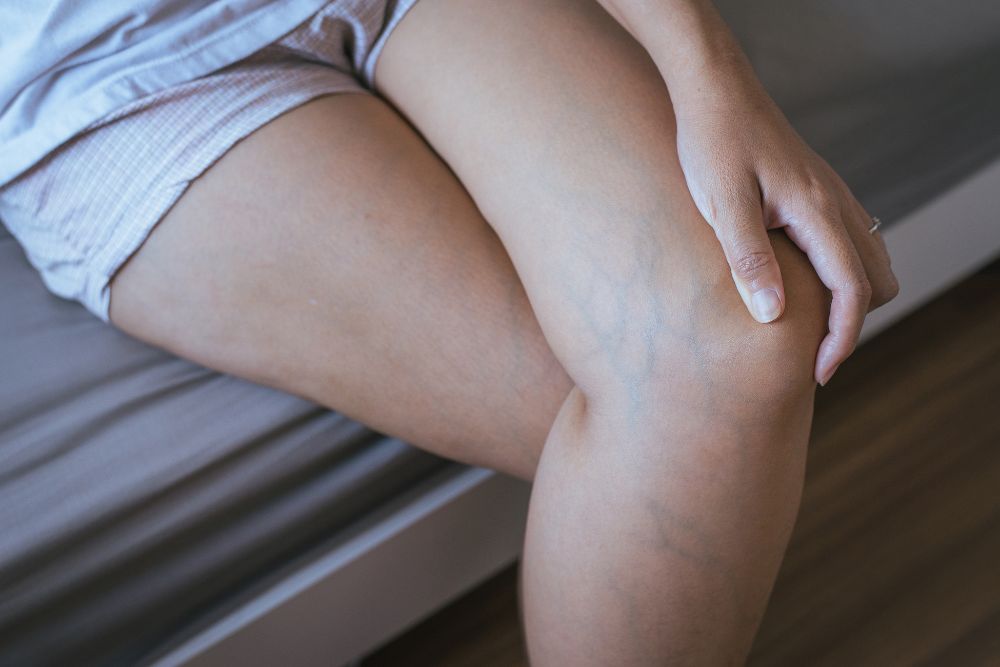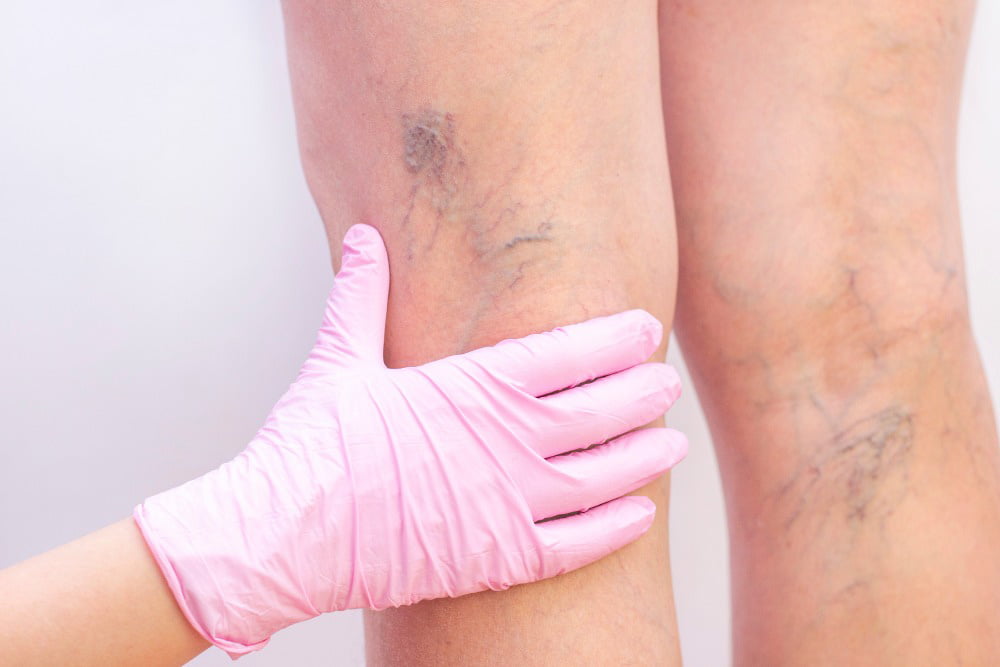What Are Reticular Veins?
While many people have probably heard of varicose veins and spider veins, fewer may be familiar with reticular veins. They are the middle child of chronic venous insufficiency (CVI). They are smaller than varicose veins—roughly 2mm in diameter. They also do not protrude above the skin like varicose veins.
Reticular and varicose veins do look similar in color—blue or purple. They also appear in many of the same areas of the body. The inner and back of the thigh are common spots, as well as the lower leg and ankle. Occasionally, they will appear on the face, but this is more common with spider veins.
Reticular veins will sometimes feed into spider veins. This is why they’re also called feeder veins. When they do this, they serve as a source of excess blood for the spider veins. In cases like this, removing the reticular veins can help eliminate the spider veins as well.
Reticular Vein Symptoms
Reticular veins may cause pain and discomfort in the surrounding area. They may also itch or burn at times. In rare cases, the presence of reticular veins can indicate blood backup in deeper parts of the leg.
In the majority of cases, however, reticular veins are just a cosmetic issue that can be easily treated.
Reticular Vein Treatment
One of the most common methods for treating reticular veins is sclerotherapy, also called injection therapy. Sclerotherapy works by injecting a chemical irritant into the defective vein. The irritant will make the vein swell, stick together, and eventually seal shut. Once blood flow has been shut off to the vein, scar tissue will develop inside the vessel and it will eventually fade away.
Sclerotherapy does not impair your circulation. Once all the reticular veins have been closed off, healthy blood vessels nearby will compensate for the missing veins.
Complete reticular vein removal may require more than one session of sclerotherapy. Sessions typically last 15 minutes to an hour and do not require anesthesia. After the session, you’ll need to wear bandages and compression stockings for 1-2 weeks. You may notice brown lines near the treated area, but these should also fade over time.
Note that you should have this procedure done by a medical specialist or board-certified vascular surgeon. The Vein Company has plenty of qualified physicians that are able to help. Feel free to contact us or give us a call.


